It’s clear that subscriptions just aren’t going anywhere anytime soon. In fact, subscription ecommerce has grown by more than 100 percent a year over the last five years, But they’re so new to ecommerce that they’re often an after-thought.
It’s tough: acquire new customers while also paying attention to your existing customers. How exactly do you focus on existing customers when you’re busy cashing in on all of those new customers coming in the door (thanks, Snapchat ads!).
How is an ecommerce brand supposed to know what works and what doesn’t when it comes to growing a subscription model?
And how can we reach that proverbial mountaintop of lower CAC and higher AOV/LTV?
Fortunately, there is one industry that’s been deeply entrenched in that monthly recurring revenue game for a long time.
They’ve tested tactics, written the playbooks, and put the “best practice” growth tips through the ringer.
That industry is SaaS (software-as-a-service).
SaaS is a business built on monthly recurring revenue. If you run an ecommerce business, you are one of those customers that SaaS products like Shopify, Klaviyo, Privy, and so many others rely on to exist. Have you taken a look at what they’re doing to keep you around? Ever considered applying some of those same principles to your brand?

Since I’ve worked with both SaaS and ecommerce brands to onboard happy(er) customers and retain those same customers long-term, I feel really well-equipped to walk you through this. Let’s look exactly what those SaaS companies do to build retention into their business models and how you can do the same.
Consider me your friendly tour guide/translator to SaaS tips for subscription ecommerce brands. Ready? Let’s go.
1) Onboarding
Did you honestly think I would write this without talking about onboarding front and center? While onboarding in SaaS often means the time period during which a customer is on a free trial (so the goal is conversion to a paid account), the same tactic can be applied to a new email subscriber in ecommerce with many of the same results.
The goal here would be to convert them to a paying customer (much like the goal for our friends in software) but it’s fair to say that the ecommerce email signup is a slightly less engaged/warm lead than a software trial signup. It’s just a lower barrier to entry but we can still treat those leads as though they matter – because they do.
How do you approach onboarding? I’ve talked a lot over the last few years about The Dinner Party Strategy™ and how it can be used to build out a welcome/onboarding sequence if you don’t already have one in place. Recently I revised my TDPS guide to be specifically geared toward ecommerce so you can grab that here and dive on in.
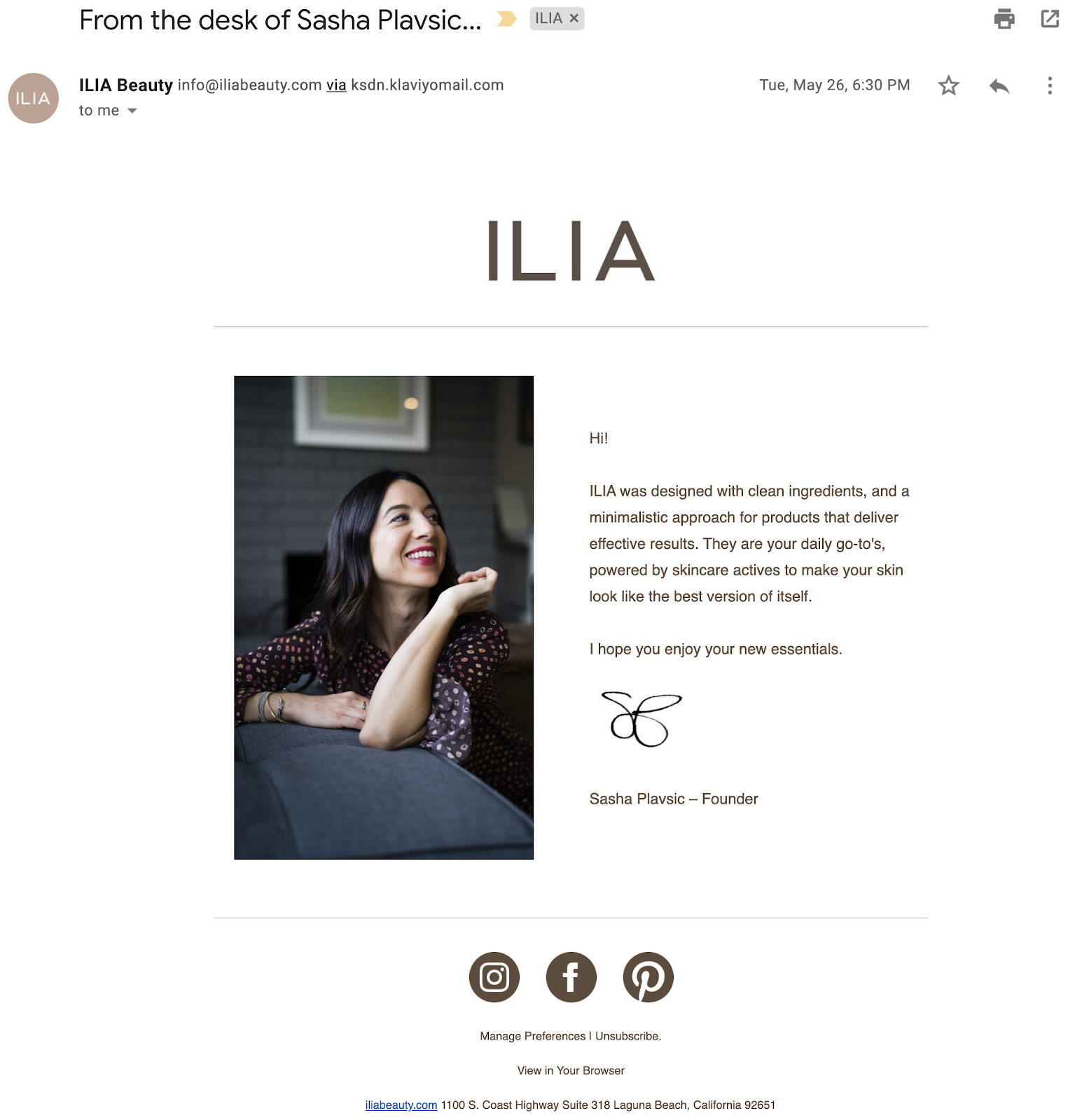
At a high level, one thing to remember is that when someone gives you their email address, they are showing you they have a pretty good interest in your brand. So imagine saying to someone “hey I like you” and then they walk away and never speak to you again until they need your help.
How would that make you feel?
Well, that is the tactic of about 93% of brands out there. Collect email addresses and then only email when there’s a sale or new product drop. You can do better. Build a relationship. Teach them about your brand. Introduce your founders, team, distributors, supply chain, etc. Invite them into your mission, your community. Then (and only then) ask them to buy.
This guide to The Dinner Party Strategy will walk you through it, complete with examples.
2) Education
In SaaS, the goal is to get customers understanding and using the software to solve a problem in their world. It’s the brand’s job to educate their new customers on how the software works, where they can go to learn more, and how they can make the most out of their time on the platform. Imagine trying to use Shopify for the first time with no help docs or getting started guide – you’d be lost!
Ecommerce brands can take the lead from SaaS companies here and push education as much as (if not more than) promos. Your brand is unique, so why not share that? What’s the story behind why the brand started? What is your mission? Do you give back or pay it forward?
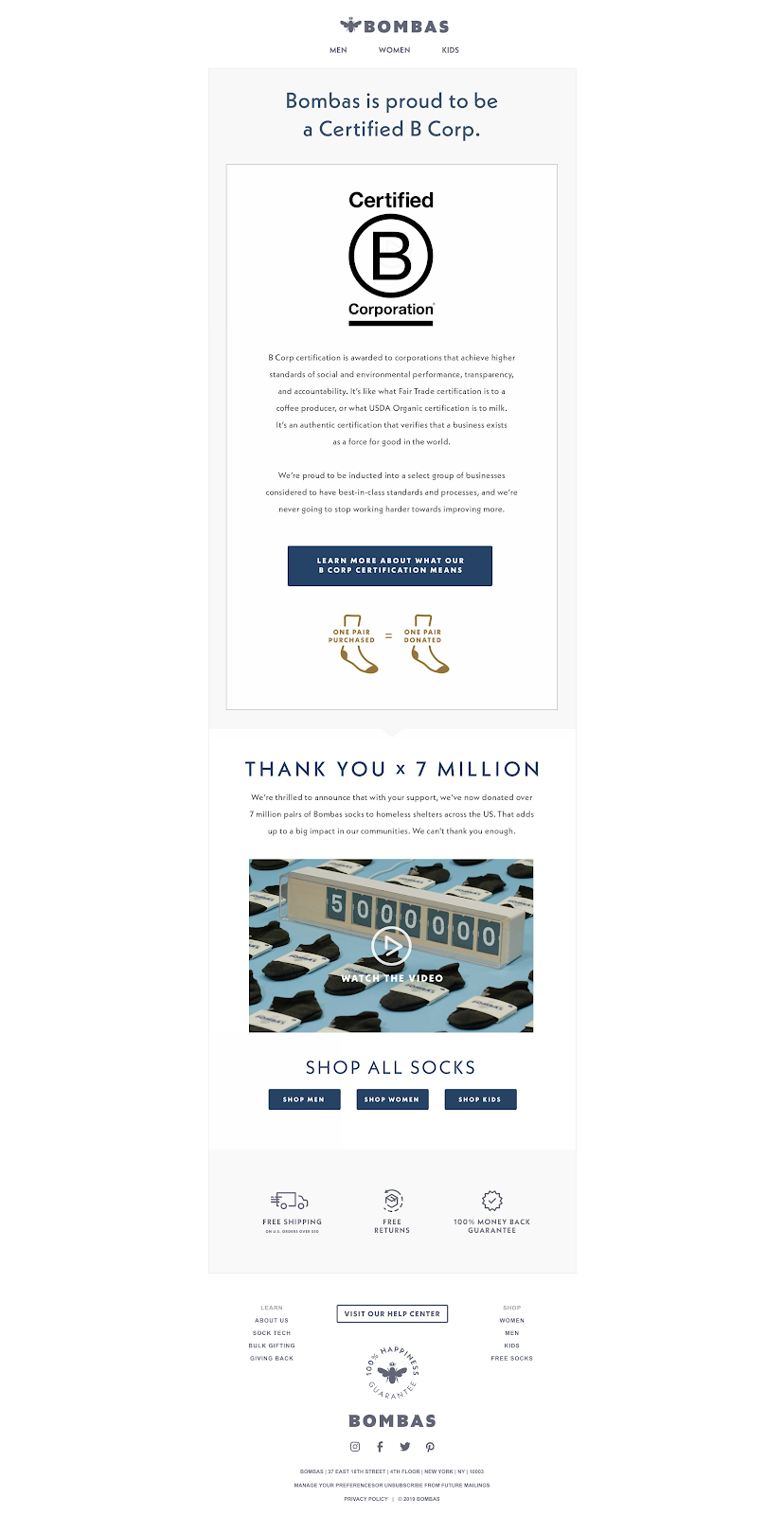
Maybe your goal is simply to solve a big problem and, after years of prototypes and testing, you’ve finally landed on it. You don’t have to have an altruistic brand to educate either. Your bone broth company can share recipe ideas. Your makeup line can show customers that their blush can double as eyeshadow or lipstick. Your tea company can teach people the proper way to brew a cup of tea.
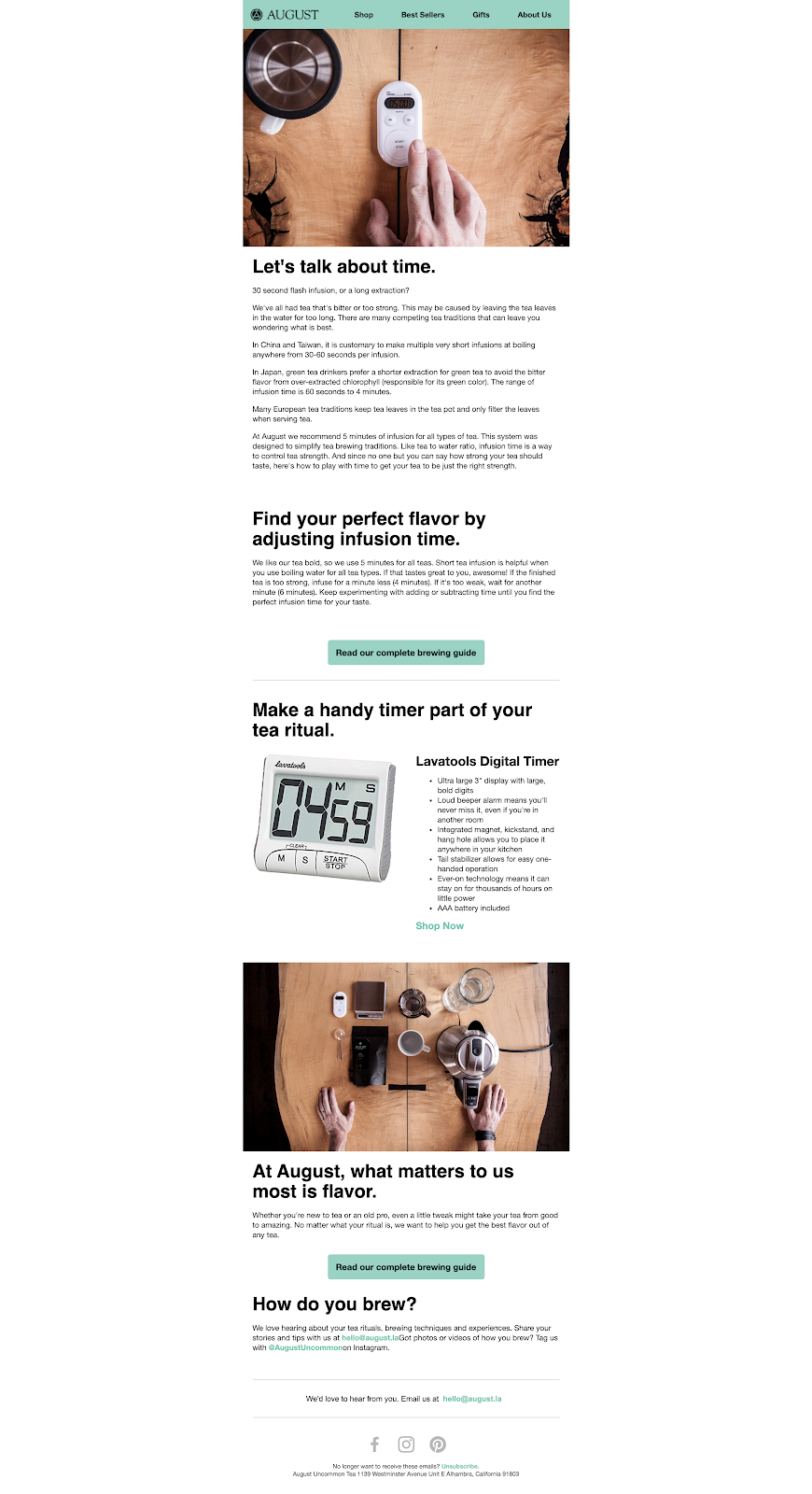
Educational opportunities are everywhere and they give you an entry to building a deeper relationship with your customers.
3) Win-back offers
When we work with SaaS brands, one of the most impactful pieces of a free trial sequence is the win-back. This is where the free trial has ended and many brands consider them lost leads at that point. But gone does not mean forgotten. Sending a brief post-trial sequence encouraging them to come back and restart their trial (perhaps with a nice offer to extend those free weeks) can win back customers who just needed a little more time.
So what does this look like for ecommerce, Val? Glad you asked.
In ecommerce you have a few use cases for win-back messaging.
Consider messaging around an extended time between purchases, a welcome coupon expiring (give them a little more time!), or seeing a subscription was cancelled.

Think about win-back messaging as an opportunity to re-engage potentially lost sales. We live in a busy world with more than enough going on at any given time. Don’t we all deserve a second chance?
4) Custom migrations
When you’re using a new piece of software for the first time, you might have been using something else in the past that was similar. Think about your email list. At some point you might have moved from Mailchimp to Klaviyo. Well both pieces of software do similar services (send emails) and involve similar features (lists, opt-ins, segments, etc.)
In the software world, many SaaS companies offer custom migrations for those customers who need a little help. Something as simple as uploading a CSV can help a customer go from lost-in-the-woods to ready-to-roll and a migration done by the customer support team can make that magic happen.
You’re probably thinking “that’s cool but no one is migrating here, we sell t-shirts”. And I get that. But hear me out. What’s a service that’s similar to migrations that makes a difference for your customers?
How about personal shopping?
On the surface, personal shopping sounds like something that might only apply to a top tier of customer or maybe exclusive to clothing brands. But it really isn’t. Test offering personal shopping to those subscribers on your email list who haven’t become customers yet.
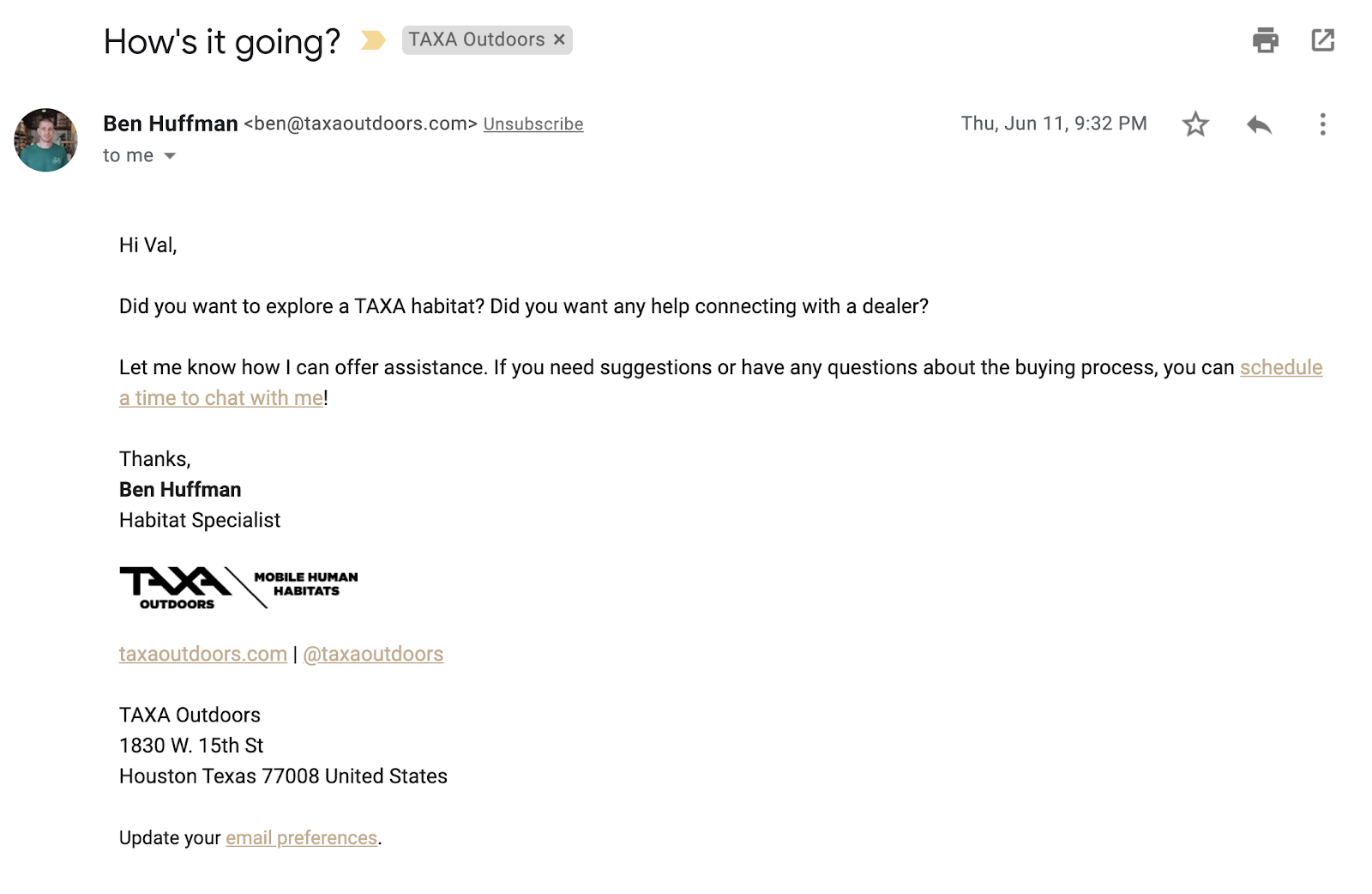
Or what about a quiz that helps pair your subscribers with the right golf club for their swing?
Or the ability to choose various models and body types when looking at clothing (and then continuing to send emails with those same images reflected in them)?
Migrations for SaaS help customers go from a blank state (nothing loaded inside the software) to a usable product they can start to see success with.
“Migrations” in the world of ecommerce is how we’re getting our future customers to see themselves using our brand. If they can see themselves sleeping on your pillow or cooking with your spatula or wearing your jeans, they’re more likely to convert to a paying customer.
5) Encourage inbound
Every time I bring this one up I can practically see the alarm bells going off over Zoom. Look, here’s the thing: inbound emails are a good thing. If you’re prepared for them.
When we run conversion and churn audits one of the biggest pieces of advice we give is to add more CTAs to reply to emails.
Why?
Because I said so (oh, sorry, you aren’t my kid). When you add requests to reply, you’re more likely to connect with your customers on a human level. Until there’s a conversation (go back and reread point #1 about onboarding) you’re a brand and they’re a credit card.
When you start a conversation and build a relationship, that levels the playing field a bit and reminds everyone that we’re all just people. Some of us have a problem and others of us have a solution. And if you start to see the relationship with your customers as mutually beneficial, you’re going to see a shift in how they perceive you as well.
Think about it: if you get an email that says “hit reply and share the URL of your store, I’d love to check it out” are you going to delete that email or share your store link?
Your customers want to be seen and heard – and inviting inbound replies does exactly that.
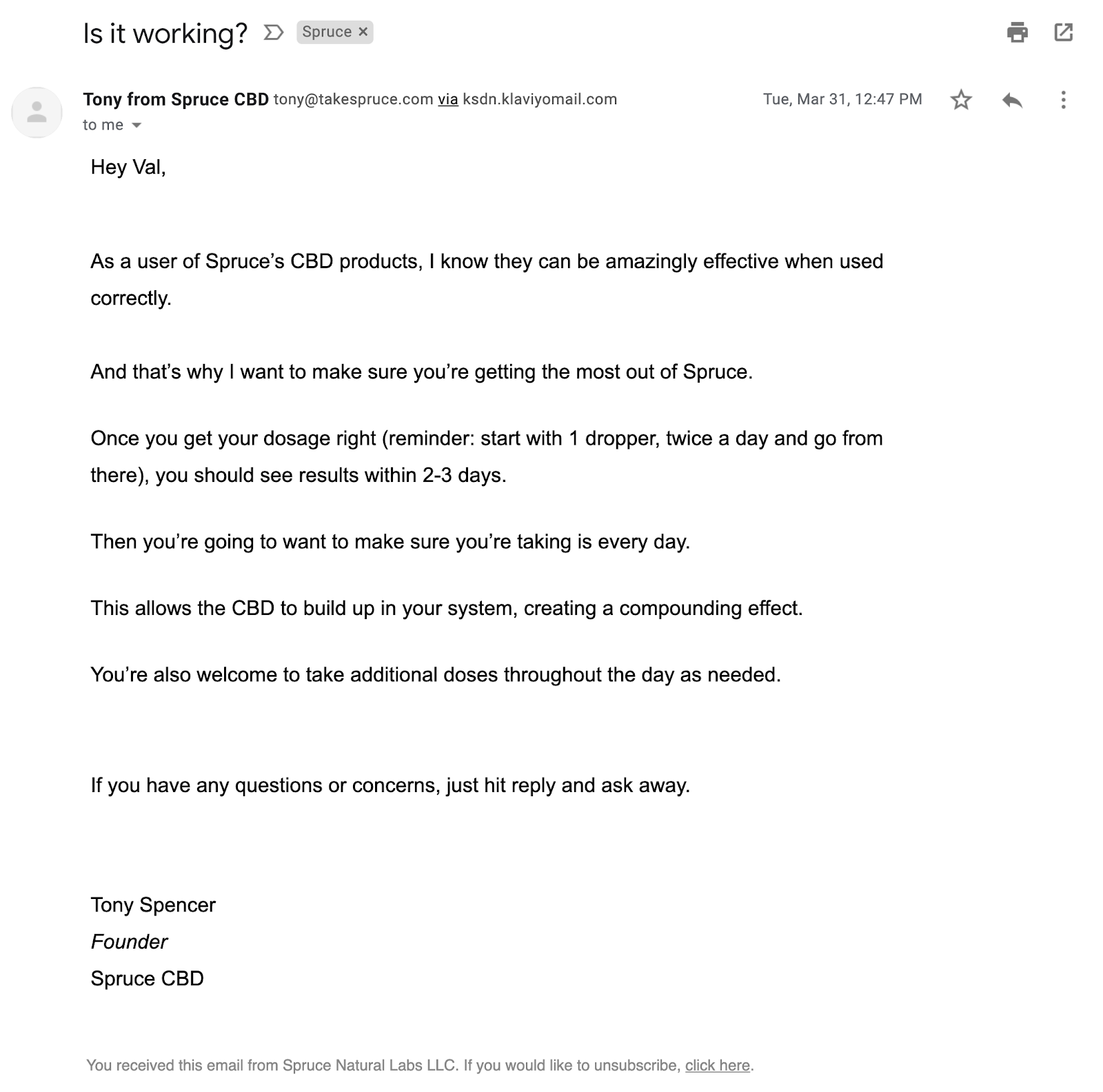
Ask them to share something relevant to your brand. Let’s say you sell running shoes. You could ask your subscribers to tell you about their favorite running weather, if they prefer roads, trails, or tracks, or maybe you want to have them share the best route in their neighborhood.
Every single reply helps them connect to your brand plus it gets you a ton of user generated content. Imagine turning those running routes around the world into a map on your website with the suggestions from your customers. The possibilities with UGC are endless and asking your customers to hit reply to an email is a cheap way to get the content you need while building the relationship you want.
6) Help build habits
One of the best non-business books I’ve ever read that absolutely helped me with business is Atomic Habits by James Clear. In this single book I learned more about habit building and why we humans have such trouble getting into routines. It also told me exactly how to improve my own habit building efforts and, in turn, I get to help my subscription-based clients build habits for their customers.
Anything that operates on a subscription basis (SaaS, ecommerce, monthly memberships sites, your local gym) relies on customers building new habits around regular use of that product.
And your customers fall into one of two categories: either they’ve never had this habit before or they’ve had the habit in place but with a different product. An electric toothbrush company is trying to get you to use their brush daily instead of your old manual option. Skincare, haircare, shaving, makeup, and even many foods fall into this “replacing the habit with a different product” category most of the time. This position has different points to address than what you might share with a customer who has never had the habit in the first place (quality of product vs why you need it to begin with, for example).
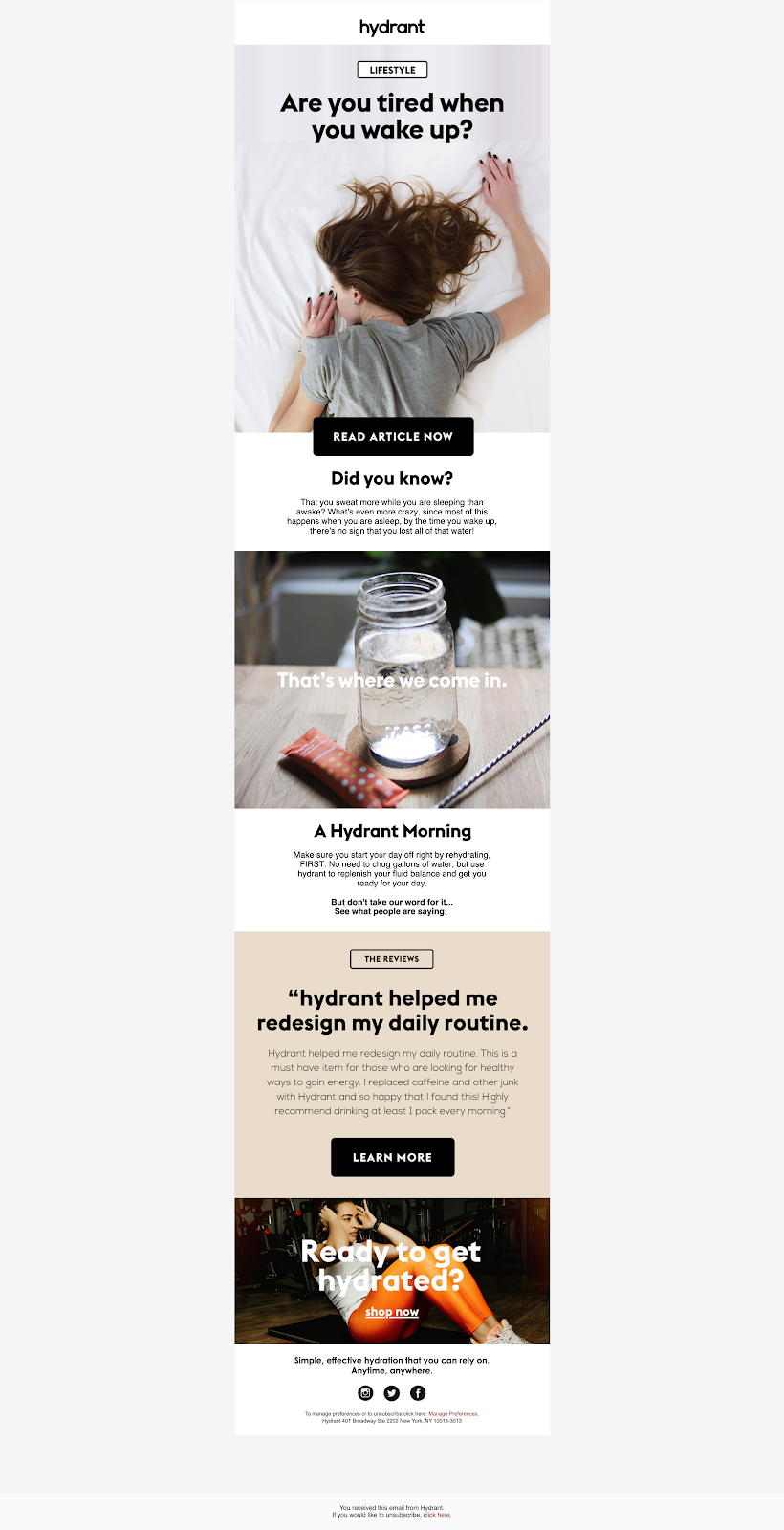
Building habits is also about simply putting your brand front and center in their mind. And, no, I’m not just talking about slapping your logo all over your product, Michael Kors. I’m talking about meeting them where they are – their inbox – on a regular basis and sharing content that’s relevant to them and their journey.
Change a word, change your world
When I first started working with ecommerce brands, I was lucky to have clients who had a deep understanding of SaaS growth tactics and how they applied to their subscription based ecommerce brand. They could strategically take the word “SaaS” and replace it with “ecommerce” to find the techniques that work for them. And I want to continue to spread that good word.
SaaS growth tactics are subscription ecommerce growth tactics. If you’re in the monthly recurring revenue game, it’s a huge benefit to you – and your customers – to take a look outside of your bubble and see what the experts are doing. You just might find a tip or two that changes everything for you.

